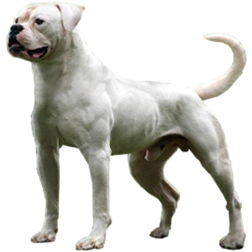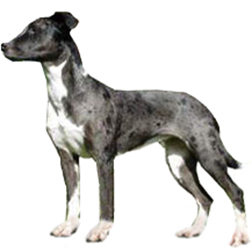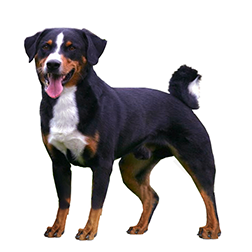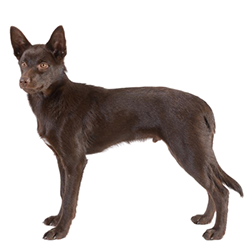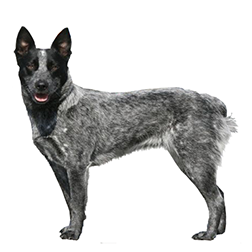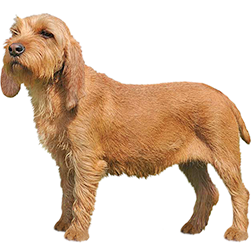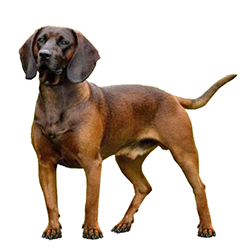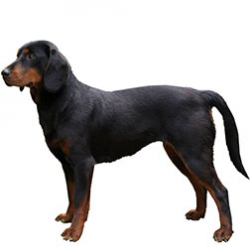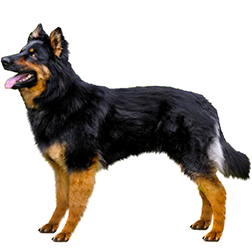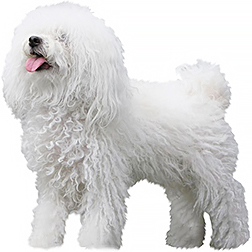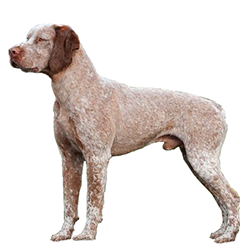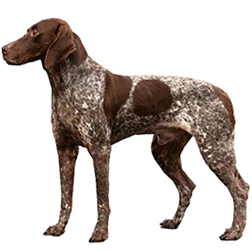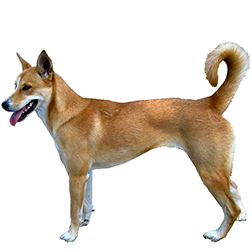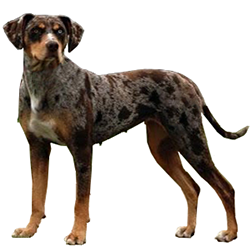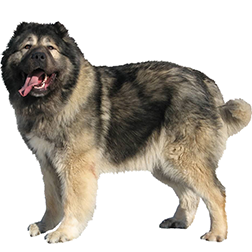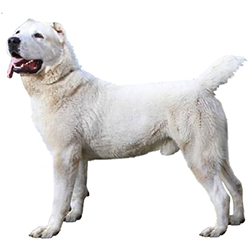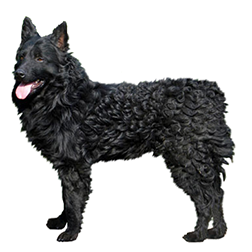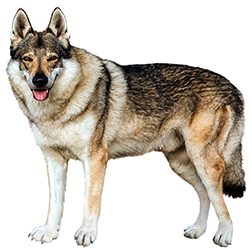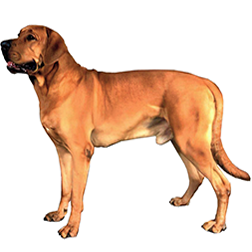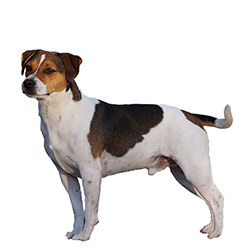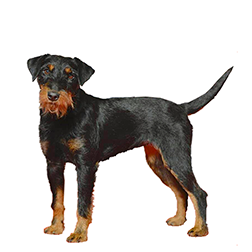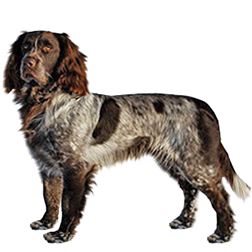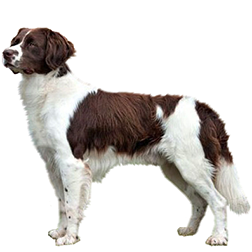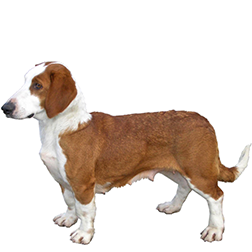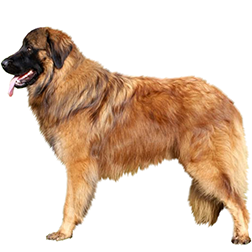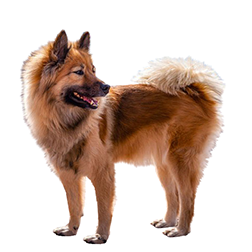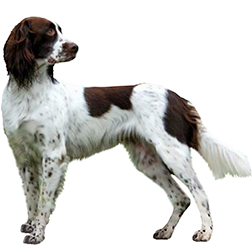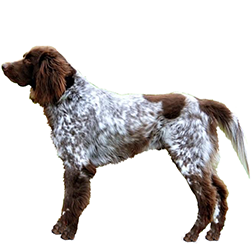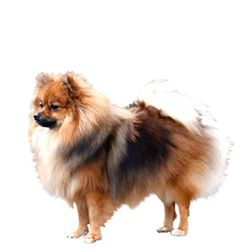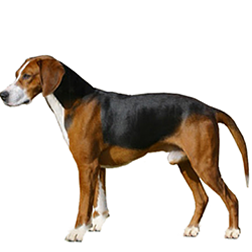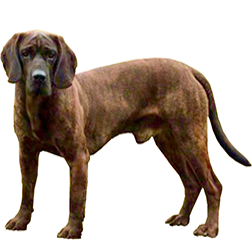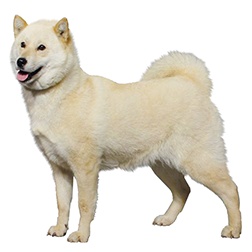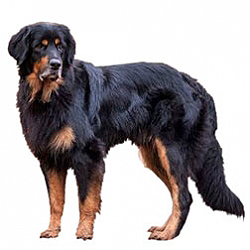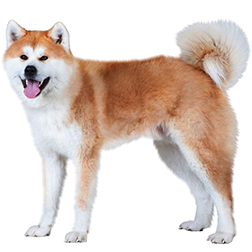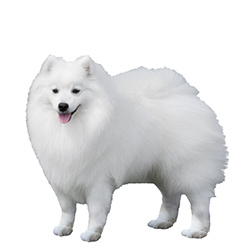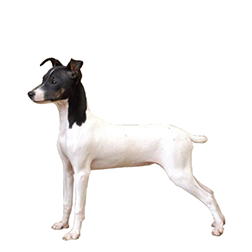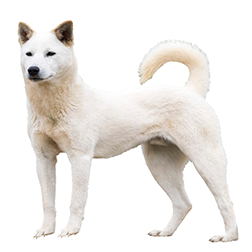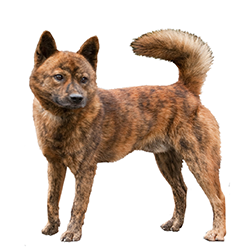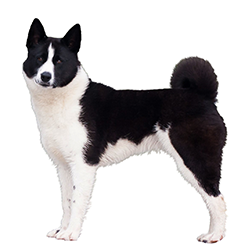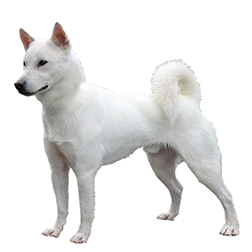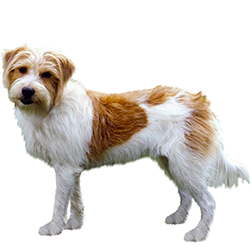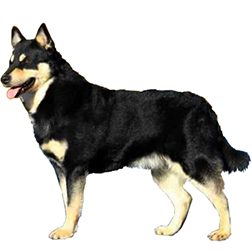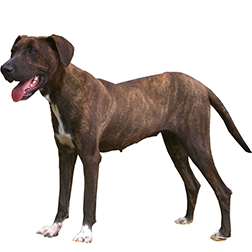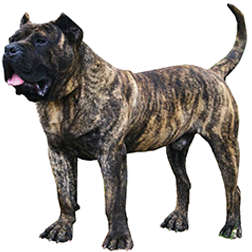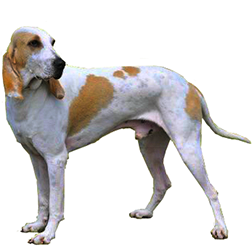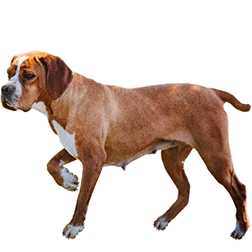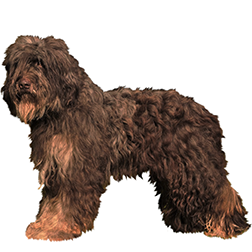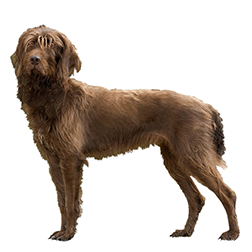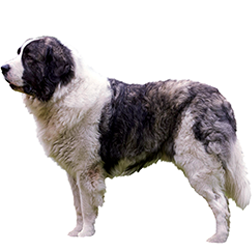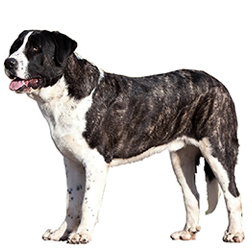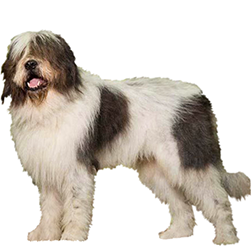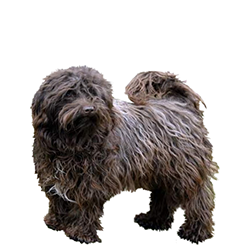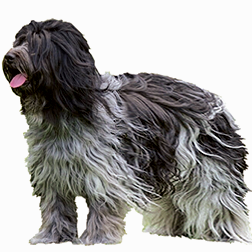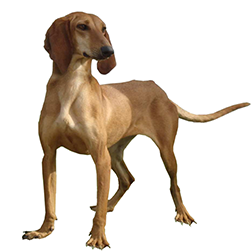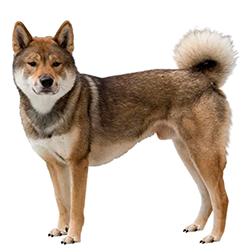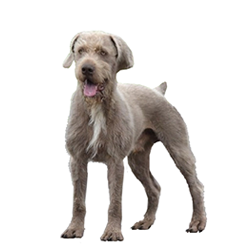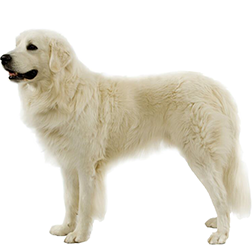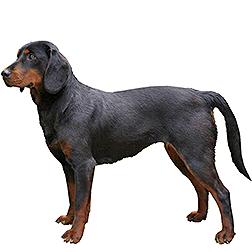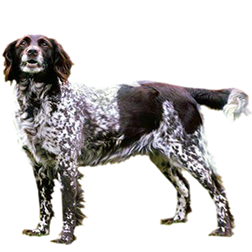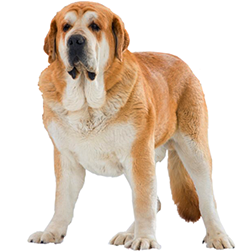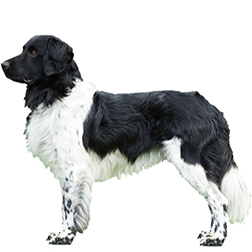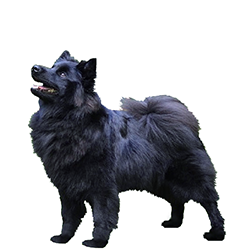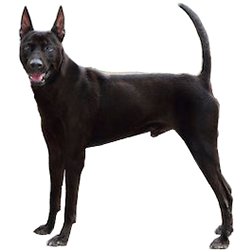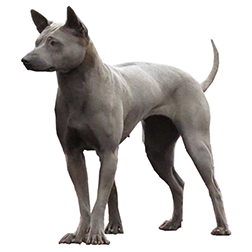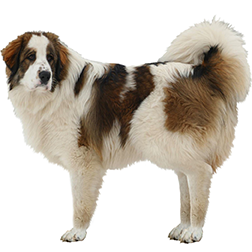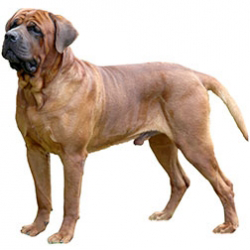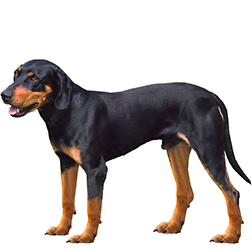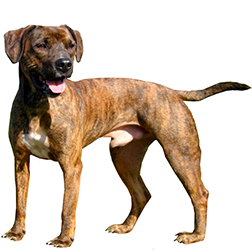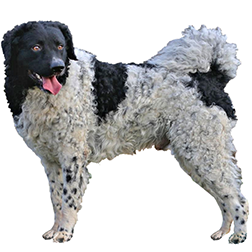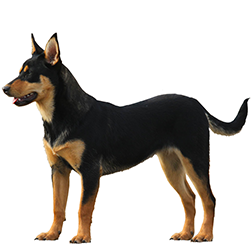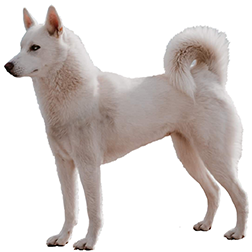Foundation Stock Service Dog Breeds
Complete Guide to the Foundation Stock Service Group
Introduction
Picture this: a brisk autumn morning in the rugged Appalachian Mountains. A Catahoula Leopard Dog bounds across the landscape, its striking coat a kaleidoscope of patterns, its eyes focused on the hunt. Nearby, a Pyrenean Mastiff watches over a flock, its massive frame exuding both power and calm. Across the globe, these Foundation Stock Service dog breeds are quietly shaping the lives of those who depend on them—herding, guarding, hunting, and most of all, connecting.
The Foundation Stock Service (FSS) breeds are a treasure trove of canine potential. These breeds are recognized as the forerunners of established classifications, and they bring with them an untamed charm that captivates both enthusiasts and newcomers alike. Whether you’re drawn to the sleek lines of the Slovensky Kopov or the whimsical fluff of the Bolognese, this group offers a blend of history, utility, and personality that few others can match.
Why This Group Captivates Dog Lovers
What makes the Foundation Stock Service breeds so special? For some, it’s the allure of owning a breed steeped in history, yet still flying under the radar of mainstream recognition. Others are drawn to their versatility—these dogs are as comfortable patrolling remote farms as they are lounging in a modern living room.
Imagine the joy of welcoming a Slovakian Wirehaired Pointer, a breed known for its courage and warmth, into your family. Or the admiration that comes with owning a Drentsche Patrijshond, an elegant sporting breed prized for its intelligence and loyalty. These dogs don’t just fill roles; they fill hearts.
Surprising First Impressions
It’s easy to assume that FSS breeds are “unfinished” or “exotic oddities,” but nothing could be further from the truth. Did you know the American Leopard Hound is one of the oldest tree dog breeds in North America, with a lineage as patriotic as its name? Or that the Yakutian Laika, originally bred by Siberian nomads, has recently become a sought-after family companion due to its affectionate nature?
While some breeds, like the Thai Ridgeback, look as fierce as they come, they can also be surprisingly gentle with children. And though the Tosa Ken may carry the weight of its historic reputation as a fighting dog, modern Tosas are often docile and deeply loyal pets.
Naming Origins and General Characteristics
The Foundation Stock Service group’s name reflects its role as a “foundation” for many kennel club-recognized breeds. These breeds are often rare or still in development, yet their characteristics are anything but incomplete.
Most FSS breeds share a remarkable resilience, honed by their roles as hunters, herders, guardians, and companions. Physically, they range from the diminutive Russkaya Tsvetnaya Bolonka to the commanding Spanish Mastiff, but all exude a presence that reflects their purpose-driven origins.
Temperamentally, they’re as varied as their appearances: the Lapponian Herder is a bundle of enthusiasm, while the Shikoku is reserved and contemplative. Yet a shared trait among these breeds is their deep bond with humans. Whether protecting, assisting, or simply accompanying, these dogs embody loyalty and adaptability.
Historical Background
From Ancient Roots to Modern Homes
The story of Foundation Stock Service breeds is one of resilience, adaptation, and enduring partnership with humans. Long before these breeds were listed as part of the FSS program, they roamed the rugged terrains of Europe, Asia, and the Americas, serving as hunters, herders, guardians, and companions.
Take the Catahoula Leopard Dog, whose lineage can be traced back to Native American dogs interbred with European hunting breeds brought by settlers. These dogs were instrumental in managing livestock in Louisiana’s dense forests, and their versatility has ensured their place in both rural and suburban homes today.
The Danish Broholmer, by contrast, was once a symbol of nobility in Denmark, guarding manors and castles with a quiet strength. Nearly lost to time after World War II, the breed has made a remarkable comeback thanks to dedicated enthusiasts. Such stories are echoed across the group, where ancient roots meet modern roles, and these dogs transition seamlessly from working partners to beloved family members.
Legends and Lore
The history of FSS breeds is peppered with tales of extraordinary bravery and loyalty. The Caucasian Mountain Shepherd Dog, for instance, is steeped in folklore as a fearless protector of livestock against wolves and even bears. Shepherds in the Caucasus Mountains still recount stories of these dogs saving entire flocks during harsh winters.
Another notable example is the Shikoku Dog, often referred to as a “living treasure” in Japan. According to legend, Shikoku dogs accompanied samurai on hunting expeditions, their intelligence and agility matching the precision of their warrior masters.
Even the humble Mountain Cur holds a special place in American lore. Known for their grit and determination, these dogs were celebrated in Appalachian culture as invaluable hunting and farm dogs, often passed down through generations as family treasures.
Cultural Connections
Across the globe, Foundation Stock Service breeds have left their mark on human history. In France, the Porcelaine Dog was revered for its elegance and prowess in tracking game, earning a place in aristocratic hunting traditions. Meanwhile, the Lapponian Herder was essential to the Sami people of Scandinavia, expertly managing reindeer herds and serving as loyal companions in the Arctic wilderness.
In Asia, the Korean Jindo is celebrated for its unparalleled loyalty, with one legendary Jindo named Baekgu walking over 300 kilometers to return home after being sold. Similarly, the Thai Ridgeback, a rare breed from Southeast Asia, is prized for its hunting abilities and was historically gifted among royalty.
Closer to home, the American Bulldog has become an emblem of rural American resilience, transitioning from a rugged farm dog to a beloved household guardian.
From ancient traditions to modern celebrations, these dogs embody a connection to cultural heritage that resonates with enthusiasts worldwide.
Classification and Standards
What Makes This Group Unique?
Foundation Stock Service breeds are like hidden gems in the canine world—rare, unpolished, and brimming with potential. Unlike officially recognized breeds, these dogs are in the spotlight of ongoing discovery and development. Think of it as a “pre-launch phase” for breeds that are on the cusp of earning full recognition by major kennel clubs.
What makes this group so fascinating is its sheer diversity. From the sleek and athletic Thai Ridgeback to the sturdy and dependable Estrela Mountain Dog, these breeds defy simple categorization. Yet, they all share a compelling story of resilience, rarity, and the promise of a bright future. For dog lovers, FSS breeds offer an opportunity to own a piece of history and play a role in shaping its future.
Meet the Judges
Classifying dog breeds is no small feat. Kennel clubs like the American Kennel Club (AKC) and the Fédération Cynologique Internationale (FCI) rely on meticulous research and expert input to decide which dogs belong in which groups. Imagine trying to organize a massive, international potluck where every dish needs a label, an origin story, and a certification—it’s that complex!
For Foundation Stock Service breeds, the classification process can be particularly tricky. Judges consider a breed’s history, purpose, physical traits, and temperament to determine where it fits. But here’s the kicker: these breeds are still evolving, which makes defining their standards a moving target.
Fun fact: Judges often have lively debates about whether certain breeds meet the criteria for inclusion. For example, the American Leopard Hound’s classification journey involved balancing its historic role in hunting with its newfound popularity as a family companion.
Breed Wars
Ah, the drama of breed inclusion! Few topics spark as much debate in the dog world as whether a breed truly belongs in a particular category. The Czechoslovakian Vlcak, for instance, has caused a stir due to its wolf-like appearance and origins as a hybrid between dogs and wolves. Critics argue that its wild ancestry blurs the line between domestic and feral, while enthusiasts passionately defend its intelligence and loyalty.
Another hot topic? The Tosa Ken’s classification. Originally bred for dogfighting in Japan, its inclusion in the FSS group raised eyebrows. Today, Tosa enthusiasts emphasize the breed’s calm demeanor and suitability as a family protector, proving that perceptions can evolve alongside standards.
These debates may seem intense, but they’re a testament to the passion and dedication of the dog community. After all, every breed’s inclusion is a step toward preserving its legacy for future generations.
Variations Across Regions
Not all kennel clubs see eye-to-eye when it comes to classification. For example, the AKC’s Foundation Stock Service focuses on developing breeds in the United States, while the FCI often takes a more global approach. This can lead to intriguing differences in standards.
Take the Eurasier. While the FCI has recognized this fluffy, family-oriented breed since the 1970s, the AKC still lists it as part of the FSS group. Similarly, the German Longhaired Pointer enjoys full recognition in Europe but remains an up-and-coming star in North America.
These regional variations add a layer of complexity—and charm—to the world of FSS breeds. It’s a reminder that while standards may vary, the universal love for these dogs remains constant.
Physical Characteristics
A Walk Through the Lookbook
Welcome to the ultimate canine runway show, where the Foundation Stock Service breeds strut their stuff! Imagine a dazzling parade of dogs, each showcasing their unique style and charm. From the muscular and commanding presence of the Caucasian Mountain Shepherd Dog to the compact and spirited Danish-Swedish Farmdog, this group offers an extraordinary range of physical traits.
Take a moment to admire the glossy, patterned coat of the American Leopard Hound—it’s as if Mother Nature herself painted each one as a masterpiece. Then there’s the Pyrenean Mastiff, whose massive size and plush double coat give it the air of a gentle giant. Meanwhile, the Thai Ridgeback saunters by with its sleek frame and distinctive ridge of fur running along its back, a hallmark of its breed.
Each dog in this group tells a story through its appearance, whether it’s the weatherproof coat of the Estrela Mountain Dog or the refined elegance of the Braque du Bourbonnais. Their physical diversity is a testament to their varied origins and roles, making them as visually captivating as they are functional.
Quirky Traits and Fun Facts
Let’s talk quirks—because every breed has them! Did you know that the Czechoslovakian Vlcak’s striking yellow eyes aren’t just for show? They reflect its wolf-like ancestry, giving it an intense gaze that’s equal parts mesmerizing and intimidating.
And how about the Australian Stumpy Tail Cattle Dog? As its name suggests, this breed is known for its naturally short tail, a feature that’s both endearing and practical for its role as a herder.
Then there’s the Bolognese, a breed whose fluffy, cloud-like coat makes it look more like a stuffed toy than a living, breathing dog. This unique feature has earned it a reputation as one of the most charming lap dogs in history.
Oh, and we can’t forget the Karelian Bear Dog, with its striking black-and-white coat that makes it look ready for a tuxedo party—or a standoff with a bear, which is precisely what it was bred to handle.
Diversity Within the Group
The Foundation Stock Service group is a visual kaleidoscope of canine beauty. In one corner, you’ll find the athletic and streamlined Kai Ken, whose brindle coat blends seamlessly with forest landscapes, making it the ultimate stealth companion. In another, the Romanian Mioritic Shepherd Dog stands proud, its shaggy coat and immense size a tribute to its hardworking roots in the Carpathian Mountains.
This diversity isn’t just skin deep—it reflects the adaptability and purpose of these breeds. Whether you’re drawn to the elegant Porcelaine, with its sleek white coat and aristocratic demeanor, or the rugged Mountain Cur, built for endurance and grit, there’s something for everyone in this group.
Their physical traits aren’t just beautiful—they’re functional. These dogs are a perfect example of form meeting function, with each feature crafted to help them excel in their roles, whether it’s guarding, herding, hunting, or simply being a loyal companion.
Temperament and Personality
The Group’s Signature Charm
Imagine a world filled with dogs who are equal parts loyal, intelligent, and occasionally mischievous—welcome to the captivating personalities of the Foundation Stock Service breeds. These dogs are like the multi-talented stars of the canine world, each with their unique flair but united by an undeniable charm.
Take the Croatian Sheepdog, for example—a ball of energy and wit that could turn a simple fetch game into an Olympic-level event. Or the Hokkaido, whose steadfast loyalty means it will stick by your side through thick and thin, rain or shine. Then there’s the Schapendoes, a breed affectionately nicknamed “the clown,” whose playful antics could brighten even the dreariest day.
Despite their differences, one thing is clear: these dogs love to engage. Whether they’re herding livestock, trailing a scent, or snuggling up for a movie night, FSS breeds are all about creating meaningful connections with their humans.
What Owners Love Most
Ask any Foundation Stock Service breed owner what they adore about their dog, and you’re bound to hear glowing stories of loyalty, intelligence, and humor. The Jindo, for instance, is famous for its uncanny ability to sense its owner’s emotions, offering comfort during tough times and joy during celebrations.
Then there’s the Appenzeller Sennenhund, a breed known for its enthusiasm and work ethic. Owners often joke that these dogs will “clock in” for any task—whether it’s guarding the yard or cleaning up a snack that mysteriously fell on the floor.
For many, the biggest appeal is the companionship these breeds offer. The Danish-Swedish Farmdog, for example, thrives on being part of the family, often acting as a “shadow” to its favorite person. It’s this combination of loyalty and personality that makes these dogs unforgettable.
Unexpected Personalities
While these breeds have signature traits, they’re also full of surprises. Take the Thai Ridgeback, often described as independent and aloof. One Ridgeback named Luna, however, defied all stereotypes by becoming the ultimate lap dog, curling up with her owner every evening and refusing to leave her side.
The Tornjak, bred to be a guardian, is usually stoic and serious. But one particularly adventurous Tornjak named Max became internet famous for his love of paddleboarding with his owner—a far cry from standing watch over livestock.
And then there’s the Catahoula Leopard Dog, renowned for its working drive. Yet some, like Buddy, have traded their herding instincts for a knack for comedic timing, earning the nickname “class clown” at his local dog park.
These unexpected personalities remind us that while breeds may share common traits, every dog is wonderfully unique, bringing their own spark to the table.
Purpose and Roles
Original Roles and Modern-Day Marvels
Foundation Stock Service breeds have a rich history of fulfilling critical roles, from safeguarding livestock to tracking elusive game. These dogs weren’t just companions—they were partners in survival. The Slovensky Kopov, for instance, was a fearless hunting dog, prized for its ability to track wild boar through dense forests. Meanwhile, the Estrela Mountain Dog stood guard over sheep in the rugged mountains of Portugal, warding off predators with its imposing size and protective instincts.
Fast forward to today, and these breeds have seamlessly adapted to modern tasks. The Danish Broholmer, once a noble guardian of manors, is now a cherished family dog, offering both companionship and security. The intelligent and versatile Australian Kelpie, initially bred to herd livestock, is often found excelling in agility competitions or as a loyal farm assistant.
These breeds even shine in unexpected arenas. The Yakutian Laika, originally a sled dog for Arctic conditions, has become a rising star in the world of therapy dogs, offering warmth and comfort in more ways than one. Social media has also given these breeds a new platform to showcase their talents, with breeds like the Finnish Spitz charming audiences with their expressive “talking” videos.
Famous Dogs in History
The legacy of Foundation Stock Service breeds includes some truly remarkable canines. Take, for example, Laika, a Yakutian Laika mix who became the first dog in space. While her story is bittersweet, her bravery brought global attention to the potential of working dogs in science and exploration.
Another standout is Blue, a legendary Catahoula Leopard Dog who became a folk hero in Louisiana. Known for his uncanny ability to manage unruly livestock, Blue’s feats earned him a statue in his hometown—a fitting tribute to a dog whose skills were truly larger than life.
Even royalty has embraced FSS breeds. The Japanese Akita Inu, for instance, was famously gifted to Helen Keller during her visit to Japan, sparking international recognition for the breed’s intelligence and loyalty.
Superstars in Action
These breeds continue to excel in both traditional and modern roles, showcasing their versatility and brilliance. The Karelian Bear Dog, for example, is a vital member of wildlife conservation teams, helping to safely track and relocate bears to prevent human-wildlife conflict.
Meanwhile, the Portuguese Pointer has made a name for itself as an exceptional hunting companion, blending instinct with precision to assist hunters across the globe.
On the modern front, the Lapponian Herder has carved out a niche as a highly sought-after service dog, known for its ability to read human emotions and provide unwavering support. Similarly, the Small Munsterlander has transitioned from hunting game birds to competing in scent work trials, where its keen nose earns top marks.
From the field to the family room, these breeds continue to prove that their purpose extends far beyond their origins. Whether they’re aiding in conservation, dominating sports, or simply bringing joy to their owners, FSS breeds are nothing short of superstars.
Training and Obedience
Training Tales
Training Foundation Stock Service breeds can be both a joy and a test of patience. Picture this: an enthusiastic Appenzeller Sennenhund named Bella, determined to fetch a ball. Bella’s owner was thrilled when she mastered the “fetch” command—until Bella began dropping the ball into every visitor’s lap, demanding constant attention. Her charm and determination made her a family favorite, but her owner had to get creative to redirect that boundless energy into productive tasks.
Then there’s Max, a Croatian Sheepdog with a knack for improvisation. During an agility class, Max decided that the tunnel obstacle wasn’t challenging enough, so he leaped over it instead. While his trainer had to stifle a laugh, Max’s antics reminded everyone that training should embrace a dog’s personality, not suppress it.
These tales highlight the unpredictable and endearing quirks of FSS breeds. They’re clever, eager to please, and often too creative for their own good, making training both rewarding and endlessly entertaining.
Tips from the Pros
Training these unique breeds requires a mix of structure, creativity, and patience. Here are some expert tips tailored to their distinctive characteristics:
- Tap into their instincts: Many FSS breeds have strong herding, hunting, or guarding instincts. Use these natural talents to your advantage by incorporating tasks like scent work, retrieving, or guarding into their training. For example, teach a Thai Ridgeback to “guard” a specific item as a game—it’s a fun way to engage their protective nature.
- Keep it exciting: These breeds are smart and thrive on mental stimulation. Rotate commands, introduce puzzles, or mix in agility exercises to keep training sessions fresh and engaging.
- Consistency is key: Breeds like the Caucasian Mountain Shepherd can be independent and require firm, consistent guidance. Make sure all family members follow the same rules and commands to avoid confusion.
- Positive reinforcement: With sensitive breeds like the Eurasier, using treats, praise, and playtime as rewards works wonders. Avoid harsh corrections, as they can dampen their enthusiasm and trust.
Challenges and Triumphs
Training Foundation Stock Service breeds isn’t without its hurdles. Some, like the Slovakian Wirehaired Pointer, have a single-minded focus that can make recall training a challenge. One owner joked, “If there’s a bird in sight, I might as well be invisible!” To overcome this, trainers recommend starting recall training in low-distraction environments and gradually increasing challenges.
Others, like the Japanese Akita Inu, can be stubborn. Their independent nature requires patience and a lot of motivation. One Akita owner found success by turning training sessions into a game, using toys and high-value treats to keep their dog engaged.
But with perseverance comes triumph. The Basset Fauve de Bretagne, known for its keen nose and determination, might be slow to master advanced commands. However, when properly trained, they excel in activities like tracking trials, showcasing their incredible focus and work ethic.
Training these breeds is a journey of mutual growth and understanding. With the right mix of creativity, patience, and love, even the quirkiest FSS breed can become a well-mannered, happy companion.
Health and Care
Keeping Them Happy and Healthy
Taking care of a Foundation Stock Service breed is like managing a high-performance vehicle—give them the right fuel, routine maintenance, and a lot of road time, and they’ll reward you with years of joy and adventure. These dogs thrive when their physical, mental, and emotional needs are met, so understanding their care requirements is key to keeping them in tip-top shape.
Most FSS breeds are hardy and versatile, but their care needs can vary widely. For instance, the lush double coat of the Estrela Mountain Dog requires regular grooming to prevent matting, while the sleek Thai Ridgeback is virtually wash-and-wear. Nutritional needs are equally diverse; the active Australian Kelpie benefits from a high-protein diet, while the less active Bolognese may need calorie monitoring to maintain a healthy weight.
Routine vet visits, vaccinations, and dental care are non-negotiable, but these breeds also thrive with preventive measures like joint supplements for larger breeds (looking at you, Pyrenean Mastiff) or consistent ear cleaning for breeds with floppy ears, like the Drentsche Patrijshond.
Weird but True
Foundation Stock Service breeds come with some fascinating quirks. Did you know that the Yakutian Laika has webbed feet, making it an excellent swimmer? This unique trait is a throwback to its Arctic origins, where swimming could mean the difference between catching prey or going hungry.
Or consider the Czechoslovakian Vlcak, whose metabolism slows dramatically in cold weather, allowing it to conserve energy—a trait inherited from its wolf ancestors.
And here’s a fun one: the Danish-Swedish Farmdog has been dubbed the “yoga dog” for its ability to stretch into seemingly impossible positions. Owners often joke that their dog’s morning routine puts their own yoga practice to shame!
These peculiarities aren’t just entertaining—they’re also reminders of the fascinating history and adaptability of these breeds.
Playtime is Medicine
For Foundation Stock Service breeds, play isn’t just fun—it’s vital. These dogs have active minds and bodies that crave stimulation, making daily exercise and mental challenges essential to their well-being.
The Portuguese Pointer, for example, thrives on games of fetch and scent work, while the Small Munsterlander loves a good romp through a hiking trail. Even less active breeds like the Kromfohrländer benefit from interactive play sessions with puzzle toys or games that engage their problem-solving skills.
Playtime also doubles as a bonding opportunity. Whether it’s herding practice with an Australian Stumpy Tail Cattle Dog or tug-of-war with a Tosa Ken, these moments strengthen the bond between dog and owner while keeping the dog physically fit and mentally sharp.
Think of play as preventive medicine—it helps burn off excess energy, reduces anxiety, and keeps your dog happy and healthy. Plus, who doesn’t love an excuse to spend more time with their best friend?
Socialization and Compatibility
Your New Best Friend
Foundation Stock Service breeds are more than just dogs—they’re devoted companions, ready to be your shadow, protector, or playmate. These breeds are known for forming deep bonds with their families, often earning nicknames like “velcro dogs” for their unshakable loyalty.
Take the Lapponian Herder, for instance. Known for its cheerful demeanor and love of teamwork, this breed thrives on being part of a family unit. One owner described their Herder as “my furry assistant,” always eager to help with chores or accompany them on errands.
Similarly, the Pyrenean Mastiff is a gentle giant that excels in creating a calm, protective environment for families. Whether watching over children or offering a reassuring presence to elderly members of the household, these dogs are steadfast in their devotion.
Lessons in Friendship
Socialization is essential for FSS breeds, helping them develop into well-rounded and adaptable companions. These dogs are naturally intelligent and curious, making them quick learners in the art of making friends—whether with humans, other dogs, or even cats!
Tips for socialization:
- Start Early: Begin introducing your dog to new experiences, people, and pets during puppyhood. For example, a Basset Fauve de Bretagne puppy benefits from early exposure to different sounds and environments, easing their transition into busy family life.
- Controlled Introductions: When introducing your Czechoslovakian Vlcak to other pets, keep the interactions calm and positive. Their wolf-like instincts might kick in, but with proper guidance, they’ll learn to coexist peacefully.
- Reward Positive Behavior: Praise and treat your dog when they exhibit friendly, calm behavior during interactions. This reinforces their confidence and encourages polite manners.
For families with children, breeds like the Danish-Swedish Farmdog are a delight. Known for their playful energy, they’re often described as “the perfect childhood companion.” Seniors, on the other hand, may appreciate the calming presence of a Kishu Ken, whose quiet loyalty and gentle demeanor make them ideal for a slower-paced lifestyle.
Scenarios in Action
Imagine a Mountain Cur interacting with children in a backyard. Its natural instincts for protection kick in, gently guiding the kids away from potential hazards while eagerly joining in their games of tag. The dog’s playful yet watchful behavior makes it both a protector and a friend.
In another scenario, a Eurasier adjusts seamlessly to a multi-pet household. Its balanced temperament allows it to play with an energetic cat one moment and then curl up beside an elderly Labrador for a nap the next.
These real-life examples highlight how socialization not only brings out the best in these breeds but also strengthens the bonds they share with their families.
Living Arrangements and Environment
Designing the Perfect Dog Space
Creating a space for a Foundation Stock Service breed is like decorating for a VIP guest—one who might demand both a cozy retreat and room to zoom. These dogs appreciate thoughtful living arrangements that cater to their unique needs.
For instance, if you have a high-energy Australian Kelpie, think “functional chic.” Incorporate a durable crate for rest, plenty of chew toys to keep boredom at bay, and maybe even a mini agility course in the backyard. On the other hand, a laid-back Bolognese might prefer a plush bed strategically placed next to your favorite reading chair for maximum cuddle time.
Adding quirky touches can make their space even more enjoyable. A Danish-Swedish Farmdog might love a DIY treat dispenser, while a Yakutian Laika would undoubtedly appreciate a cooling mat during warmer months (bonus points if it matches your décor).
City or Country Life?
One of the wonders of FSS breeds is their adaptability. While many of these dogs were originally bred for wide-open spaces, they can thrive in various environments with the right accommodations.
City Life:
In an apartment setting, breeds like the German Spitz or Kromfohrländer can be ideal companions. Their moderate energy levels make them manageable in smaller spaces, provided they get regular walks and mental stimulation. Think of daily trips to a dog park as their urban adventure—a chance to stretch their legs and engage with their surroundings.
Country Life:
Rural homes are a dream for breeds like the Catahoula Leopard Dog or the Mountain Cur, whose instincts thrive in open spaces. These dogs love having room to roam, chase scents, and channel their natural talents. Just be sure to provide a secure area to prevent them from following their noses too far afield!
The key to their happiness isn’t location—it’s engagement. Whether in a high-rise or on a farm, these breeds flourish when their minds and bodies are kept active.
Climate and Quirks
Foundation Stock Service breeds are as diverse in their climate preferences as they are in appearance. Some are perfectly equipped for icy winters, while others bask in the sun like seasoned beachgoers.
The Estrela Mountain Dog, for example, was built for the chill of Portugal’s highlands. Its thick coat allows it to thrive in cold climates, but in warmer areas, it’ll appreciate shady spots and plenty of hydration. Conversely, the Thai Ridgeback revels in warmer weather, but may need a cozy sweater during colder months—yes, even tough dogs can rock knitwear!
And let’s not forget the playful antics that come with seasonal changes. A Lapponian Herder might turn your snowy backyard into its personal winter wonderland, while a Hokkaido can make a game out of leaping through autumn leaf piles.
No matter the climate, these breeds have a knack for adapting, especially when their owners take care to meet their needs. Whether it’s a cooling vest in summer or a heated dog house in winter, small adjustments can make a big difference in their comfort.
Fun Facts and Quirks
Did You Know?
The Foundation Stock Service breeds are full of surprises, with fascinating trivia and quirks that make them stand out from the crowd. Did you know…
- The Karelian Bear Dog is so fearless that it’s used in wildlife conservation to chase off bears without harming them? Talk about a dog that lives up to its name!
- The Czechoslovakian Vlcak holds a record for endurance, capable of running over 60 miles in a single day. It’s like having a marathon runner in fur.
- The American Leopard Hound is one of the few breeds with naturally occurring glass eyes, a striking feature that adds to their mystical appearance.
And here’s a fun one: the Bolognese Dog has been called “the ultimate conversation starter” because strangers can’t resist asking, “What kind of fluffy cloud is that?”
Bizarre Habits and Endearing Oddities
What makes these breeds unforgettable are their unique behaviors and quirks—some practical, some just plain adorable.
- Thai Ridgeback’s Escape Artist Tendencies: Known for their agility, these dogs are like canine Houdinis, able to scale fences or find the smallest gap to squeeze through. Owners often compare them to ninjas!
- Schapendoes’ Dance Moves: When excited, the Schapendoes has a signature bounce that looks like it’s performing a joyful jig. It’s impossible not to smile when you see it.
- Caucasian Mountain Shepherd’s Nap Game: This breed takes power naps to a new level, often sprawling in the most hilariously awkward positions. Despite their size, they somehow manage to squeeze into spaces you’d think only a cat could fit.
- Kai Ken’s Camouflage Coat: Nicknamed the “tiger dog,” this breed’s brindle coat allows it to blend seamlessly into natural landscapes. It’s like they’re born with a built-in invisibility cloak!
Some quirks are downright charming. For example, the Danish Broholmer has a habit of leaning on people it loves, often earning it the nickname “the leaning tower of cuddles.” Meanwhile, the Yakutian Laika is known to howl in perfect harmony with musical instruments, making it a surprise hit at family gatherings.
These oddities aren’t just endearing—they’re part of what makes FSS breeds so unique and cherished.
Financial and Practical Considerations
Breaking the Bank or Budget-Friendly?
Owning a Foundation Stock Service breed can range from a modest investment to a significant financial commitment, depending on the breed and its specific needs. Some breeds, like the Danish-Swedish Farmdog, are relatively low-maintenance, while others, like the Pyrenean Mastiff, may come with higher costs for food, grooming, and health care simply due to their size.
The initial cost of acquiring an FSS breed can vary widely. Rare breeds, such as the Slovensky Kopov or Kishu Ken, often come with a higher price tag due to limited availability and the careful breeding practices required to preserve their unique traits. However, adopting from a rescue or fostering an FSS dog can offer a more budget-friendly option while giving a dog in need a loving home.
Care-related expenses include regular vet visits, high-quality food (especially for active or large breeds), grooming tools, and training. For example, a Mountain Cur, with its high energy and working instincts, may benefit from professional training sessions to help channel its drive—a worthwhile investment for a well-adjusted companion.
The Real Cost of Happiness
When it comes to the emotional rewards of owning an FSS breed, the value is immeasurable. These dogs bring joy, companionship, and often a sense of pride in owning a rare or historically significant breed.
Take the story of Luna, a German Longhaired Pointer rescued by a couple living on a sprawling farm. Luna quickly became their partner in everything from morning jogs to evening stargazing. Despite initial costs for training and medical care, her owners describe her as “the best investment we’ve ever made.”
Then there’s Max, a Slovakian Wirehaired Pointer whose family discovered his hidden talent for scent work. After enrolling him in tracking classes, Max became a local hero by helping locate a missing pet. His family beams with pride every time someone in the community says, “That’s Max—the dog with the nose!”
Even smaller breeds, like the Russkaya Tsvetnaya Bolonka, can bring outsized happiness. One owner recalls how her Bolonka, Daisy, helped her through a difficult time by offering unconditional love and a reason to smile every day.
Balancing the Costs
While owning an FSS breed does require financial and time commitments, the emotional and practical benefits far outweigh the expenses. Whether it’s the security provided by a protective breed like the Caucasian Mountain Shepherd or the endless laughter inspired by a playful Schapendoes, these dogs enrich their owners’ lives in ways that can’t be measured in dollars.
For prospective owners, it’s helpful to plan ahead—budget for initial costs, set aside savings for emergencies, and invest in quality care. In return, you’ll gain not just a pet but a loyal partner and cherished family member.
Ethical and Legal Considerations
Being an Ethical Advocate
Owning a Foundation Stock Service breed comes with more than just the joys of companionship—it also carries the responsibility of being a thoughtful and ethical advocate for your dog. These rare and developing breeds require owners who are committed to preserving their unique traits and ensuring their well-being.
For breeders, ethical practices are paramount. This means prioritizing the health and temperament of the breed over profit, conducting thorough health screenings, and providing proper socialization for puppies. Imagine this: a breeder ensures their Slovensky Kopov puppies are raised in an environment filled with sensory stimulation—introducing them to different sounds, surfaces, and gentle handling. These early experiences set the stage for confident, well-adjusted dogs.
As an owner, advocacy can be as simple as educating others about your breed’s history and needs. For instance, sharing the story of your Lapponian Herder’s herding instincts can spark interest and understanding in those unfamiliar with the breed. It’s also about setting a positive example by providing excellent care, training, and socialization for your dog.
Unleashing the Rules
Legal considerations might sound dry, but they’re crucial—and they can be surprisingly relatable.
Breed-Specific Laws:
Some FSS breeds, like the Tosa Ken or Central Asian Shepherd, may face breed-specific legislation (BSL) in certain regions due to misconceptions about their temperament. For owners, this means researching local laws and advocating for fair treatment by educating others about the breed’s true nature. Imagine a Tosa owner who hosts a community event to demonstrate the breed’s calm demeanor and excellent training—a powerful way to challenge stereotypes.
Travel and Identification:
Planning to take your dog on an international adventure? Make sure you’re aware of travel requirements, such as microchipping and vaccinations. A Yakutian Laika owner might find themselves explaining their dog’s unique traits at an airport, charming curious onlookers while showcasing responsible ownership.
Ethical Adoption and Purchase:
Whether adopting or purchasing, it’s important to ensure the dog comes from a reputable source. Avoid puppy mills and work with ethical breeders who prioritize the welfare of the dogs. A humorous yet memorable example? “If the breeder is offering a ‘buy one, get one free’ deal, it’s probably time to walk away.”
Why It Matters
Being an ethical and legally informed owner not only protects your dog but also enhances the reputation of the breed as a whole. By following the rules, advocating for responsible practices, and sharing the joys of ownership, you’re contributing to a brighter future for these incredible dogs.
Remember: owning an FSS breed isn’t just a privilege—it’s an opportunity to be a part of their ongoing story, ensuring they’re appreciated, respected, and protected for generations to come.
Group-Specific Activities and Sports
From Couch Potatoes to Champions
Foundation Stock Service breeds are a dynamic bunch, with talents as diverse as their origins. While some are content lounging on the couch, others thrive when they have a job to do or a challenge to conquer. These dogs excel in activities that engage their minds and bodies, offering countless opportunities for bonding with their owners.
For high-energy breeds like the Australian Kelpie or Lapponian Herder, agility courses are the ultimate playground. Their sharp intelligence and quick reflexes make them natural competitors, weaving through poles and leaping over hurdles with breathtaking precision. On the other hand, the more laid-back Bolognese might prefer something like trick training or casual fetch—low-impact yet full of fun.
Even scent-based games are a hit. Try creating a treasure hunt for your Slovakian Wirehaired Pointer by hiding treats around your yard or house. Their noses will lead the way, and their wagging tail will show just how much they enjoy the adventure.
Tail-Wagging Competitions
Many FSS breeds shine in canine competitions and events, showcasing their unique skills and athleticism.
Herding Trials:
For breeds like the Australian Stumpy Tail Cattle Dog or Karelian Bear Dog, herding trials are a natural fit. These events allow them to channel their instincts while demonstrating incredible focus and control. Picture a Stumpy Tail Cattle Dog maneuvering a group of sheep with precision and flair—it’s a sight to behold!
Scent Work:
Breeds like the Transylvanian Hound and Hanoverian Scenthound excel in scent work trials, where they’re tasked with identifying specific odors or tracking a trail. These competitions are as much fun for spectators as they are for participants, with the dogs’ enthusiasm on full display.
Agility and Obedience:
For agility stars like the Danish-Swedish Farmdog, events that test their speed, coordination, and teamwork are the ultimate thrill. Obedience trials also highlight the intelligence and trainability of breeds like the Schapendoes, whose natural charm often steals the show.
Cultural Celebrations:
Some breeds even take part in events that celebrate their heritage. The Thai Ridgeback, for example, might be featured in cultural festivals highlighting its role in Southeast Asian history. These events not only showcase the breed’s beauty but also educate the public about its origins and significance.
Imaginative Ideas for Bonding
If formal competitions aren’t your thing, there are still plenty of ways to engage your FSS dog in meaningful activities. For instance:
- Create a DIY herding game for your Croatian Sheepdog using soft balls or lightweight cones.
- Set up a backyard obstacle course for your Portuguese Pointer, complete with tunnels and jumps.
- Try dock diving with your Yakutian Laika, who will relish the chance to leap into the water with exuberance.
These activities not only provide physical exercise but also deepen the bond between you and your dog, reinforcing their natural skills and building confidence.
Famous Breeds and Notable Dogs
Spotlight on Stars
Foundation Stock Service breeds may not always steal the spotlight, but their remarkable stories and achievements make them unforgettable heroes in their own right.
Take the Karelian Bear Dog, for example. These fearless canines have worked with wildlife conservation teams to manage human-bear conflicts. One famous Karelian named Mishka earned recognition for safely deterring bears from urban areas, becoming a symbol of coexistence between humans and wildlife.
Another notable example is Laika, a Yakutian Laika mix who became the first dog in space. Though her story is bittersweet, her bravery remains a testament to the strength and adaptability of working breeds.
The Catahoula Leopard Dog, Louisiana’s state dog, has also made history. Renowned for its versatility and intelligence, it played a key role in the development of American herding techniques. Many Catahoula enthusiasts still tell stories of legendary dogs who could single-handedly manage unruly livestock.
Paws in Pop Culture
Foundation Stock Service breeds have quietly made their mark in the world of entertainment, captivating audiences with their unique looks and personalities.
- The Thai Ridgeback has featured in several Southeast Asian films, often symbolizing loyalty and bravery. Its striking appearance and agility make it a natural star.
- The Danish-Swedish Farmdog charmed viewers in Scandinavian children’s television, often depicted as a clever and resourceful companion to young adventurers.
- The Central Asian Shepherd Dog has appeared in documentaries highlighting its historic role as a guardian of flocks in harsh climates, earning admiration for its endurance and strength.
Books and literature have also celebrated these breeds. The Czechoslovakian Vlcak, with its wolf-like elegance, inspired the fictional canine characters in several European novels, often portrayed as loyal guardians with a mysterious edge.
Why They Matter
These famous dogs and pop culture appearances don’t just entertain—they also educate and inspire. They bring attention to the unique traits and histories of FSS breeds, deepening appreciation for these remarkable canines.
Whether through heroic acts, on-screen performances, or written words, these dogs continue to prove that they are more than companions—they are stars in their own right, enriching our lives with their stories and presence.
Practical Tips for Owners
Pro Tips for Newbies
Owning a Foundation Stock Service breed is like stepping into the world of rare gems—they’re unique, captivating, and require a bit of special care. Here are some practical tips to ensure a smooth journey with your new canine companion:
- Do Your Homework: Before bringing home your Slovensky Kopov or Bolognese, research the breed’s specific needs. Knowing whether you’re adopting an energetic herder or a laid-back lap dog will save you (and your furniture!) a lot of trouble.
- Start Training Early: Foundation breeds are intelligent but can be independent. Start with basic commands and positive reinforcement the moment they step into your home. For instance, a Karelian Bear Dog will thrive on firm, consistent training that keeps its sharp instincts engaged.
- Socialization is Key: Introduce your dog to various people, pets, and environments during its early months. A well-socialized Czechoslovakian Vlcak, for example, is more likely to become a confident and adaptable companion.
- Create a Routine: These breeds love structure. Whether it’s meal times, playtimes, or daily walks, consistency helps them thrive.
- Don’t Forget Mental Stimulation: Smart breeds like the Australian Kelpie need more than just physical exercise—they crave mental challenges, too. Puzzle toys, scent games, or even teaching them quirky tricks will keep their minds sharp and boredom at bay.
Common Owner Missteps
Owning an FSS breed can come with a few laughable (but avoidable) rookie mistakes. Let’s save you the trouble with a humorous look at what not to do:
- Mistaking a Couch Potato for a Marathon Runner:
You may think, “This fluffy Bolognese doesn’t need much exercise!” Next thing you know, your pint-sized pup is tearing through your living room at breakneck speed. Tip: Even smaller breeds need their zoomies burned off! - Underestimating the Fence:
Got a Thai Ridgeback or a Kai Ken? Don’t be surprised when your backyard Houdini scales a six-foot fence like it’s a mere speed bump. Tip: Invest in secure, high fencing—or better yet, supervise outdoor playtime. - Skipping the Research:
“What do you mean my Pyrenean Mastiff is going to weigh as much as me?” Avoid surprises by asking questions and understanding the breed’s full-grown size, needs, and quirks before adoption. - Neglecting Grooming:
That shaggy Estrela Mountain Dog might look low-maintenance, but let’s talk about the tumbleweeds of fur during shedding season. Tip: A good brush (and a powerful vacuum) is your best friend. - Ignoring Their Instincts:
Thinking your Transylvanian Hound won’t follow its nose? Think again! These breeds have strong instincts that need to be channeled properly.
Final Thoughts for Owners
FSS breeds are a rewarding challenge, combining charm, intelligence, and individuality. While they may require a little extra effort, the bond you’ll form with your unique canine companion will make every moment worthwhile.
Remember, no one starts as an expert. With patience, research, and a sense of humor, you’ll soon become the proud owner of not just a dog, but a one-of-a-kind member of the family.
Resources and Support
Join the Pack
Owning a Foundation Stock Service breed can feel like being part of an exclusive club—one where everyone is as passionate about these rare and remarkable dogs as you are. Connecting with breed-specific clubs and communities is an excellent way to share experiences, gather advice, and find support.
- Breed Clubs: Many FSS breeds have dedicated clubs, such as the American Leopard Hound Club or the Central Asian Shepherd Dog Association. These organizations are treasure troves of information, from training tips to health resources. They often host events like meetups, shows, and seminars where you can bond with fellow enthusiasts.
- Online Communities: Social media platforms and forums offer spaces to ask questions, swap stories, and share photos of your furry friend. Groups like “Foundation Stock Service Breeds USA” on Facebook or Reddit threads dedicated to specific breeds are great starting points.
- Rescue Networks: If you’re interested in adopting an FSS breed, rescue groups often focus on rehoming these dogs. Connecting with these networks helps you make a difference while finding your next best friend.
Building these connections ensures you always have a pack to turn to for guidance and camaraderie.
Best Reads for Dog Lovers
For those eager to dive deeper into the world of Foundation Stock Service breeds, there’s no shortage of engaging reads tailored to these dogs. Here are a few recommendations:
- “Dogs of the World: Rare Breeds and Their Stories” by Sarah Foster
This beautifully illustrated book highlights lesser-known breeds, including many FSS stars. It’s perfect for learning about their history and unique traits. - “Herding Instincts and How to Train Them” by John Parker
Ideal for owners of herding breeds like the Australian Stumpy Tail Cattle Dog or Lapponian Herder, this guide offers practical training tips and fascinating insights into their working instincts. - “The Canine Mind: Understanding Intelligence and Behavior” by Dr. Elena Rivera
This deep dive into canine psychology is especially helpful for understanding intelligent and independent breeds like the Thai Ridgeback or Karelian Bear Dog. - Breed-Specific Articles and Blogs:
Websites like the American Kennel Club’s FSS section or dedicated breed blogs often feature up-to-date articles on care, training, and health. Bookmarking these pages ensures you always have trusted resources at your fingertips.
Final Note
The journey of owning a Foundation Stock Service breed is as rewarding as it is unique. By joining communities and expanding your knowledge through trusted resources, you’ll be well-equipped to give your dog the best possible life while becoming an advocate for these extraordinary breeds.
Conclusion
Why You’ll Fall in Love
Foundation Stock Service breeds are more than just dogs—they’re living history, loyal companions, and boundless sources of joy. Whether it’s the unwavering devotion of the Caucasian Mountain Shepherd, the playful energy of the Danish-Swedish Farmdog, or the quiet intelligence of the Thai Ridgeback, these breeds have a way of capturing your heart and never letting go.
Their diversity is their charm. Each breed brings its own story, quirks, and talents, making them as unique as the families they join. These dogs aren’t just pets—they’re partners in adventure, protectors of the home, and steadfast friends through every twist and turn of life.
Your Next Adventure Awaits
Exploring the world of Foundation Stock Service breeds is like stepping into a treasure chest of canine wonders. Whether you’re drawn to their rich histories, their fascinating traits, or their potential to become a cherished part of your family, there’s no denying the magic they bring to our lives.
If you’re ready to open your heart and home to one of these remarkable dogs, your next adventure awaits. Dive into their world, connect with their communities, and experience the unmatched joy of welcoming a rare and extraordinary breed into your life. With their companionship, every day becomes a little brighter, and every moment a little more special.
Thank you for exploring this guide—your journey into the world of Foundation Stock Service breeds is just beginning. Whether you’re considering adopting one of these unique dogs or simply celebrating their incredible diversity, you’re now part of the story that keeps their legacies alive.
Did You Enjoy this Article? Share it and Help Us Spread the Word!
If you found this article helpful, we'd appreciate it if you could share it with your friends or link to it from your website, blog, or group! You can also use the convenient social share tabs on the left side of the screen to instantly share this page to your social media feed. For more ways to support and promote the American Breeder Community, visit our Share & Promote Together page for social media posts and memes you can copy and share. Your support means the world to us!
Disclaimer: The information provided in this article is for general informational purposes only and does not constitute legal, medical, financial, or professional advice. While we strive for accuracy, we make no representations or warranties regarding the completeness, accuracy, reliability, or suitability of the information. Please consult with a professional before making decisions based on the content provided. American Breeder Inc. assumes no responsibility for any errors or omissions or for the results obtained from the use of this information.

